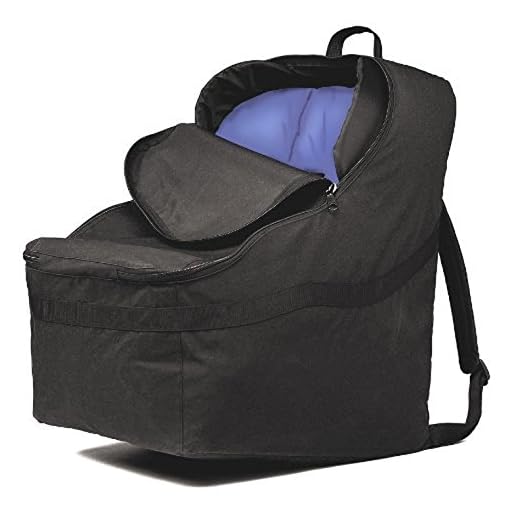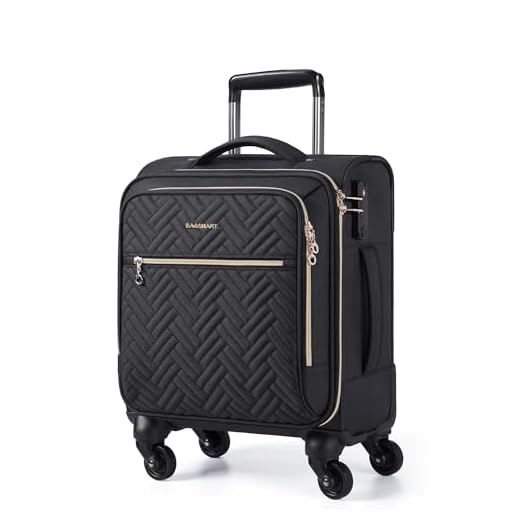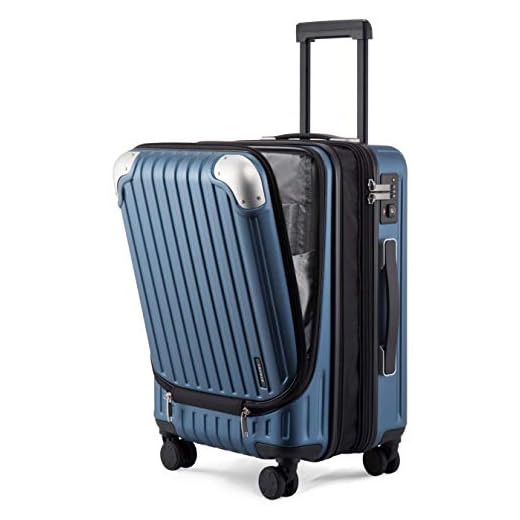







Recommendation: Request crew assistance only when a single passenger cannot safely lift a bag into an overhead bin; otherwise plan to stow carry-on items independently and use gate-checking for oversized or heavy pieces.
Size and weight benchmarks: many major US carriers publish a carry-on guideline of 22 × 14 × 9 in (56 × 36 × 23 cm). Several international and low-cost operators limit cabin baggage mass to roughly 7–10 kg (15–22 lb); specific allowances vary by ticket type. Overhead-bin space is first-come, first-served and dimensions differ by aircraft model, so consult your carrier’s baggage page before departure.
Practical steps for requesting assistance: notify the gate agent before boarding if an item seems too large or heavy; ask to gate-check at that point. If cabin crew agrees to lift a bag into a bin, stand to the side, keep hands on the bag to guide placement, and follow crew instructions precisely. Crew will decline when a lift would jeopardize safety, block aisles, or worsen a medical condition.
Packing tips to reduce need for assistance: place dense/heavy objects in checked baggage, split weight across two smaller carry items, use wheeled cases and padded straps for easier handling, and store fragile contents in a smaller personal bag that fits under the seat. Boarding early increases the chance of securing overhead space near your row.
Liability and damage protocol: if a bag is damaged during an assisted stowage, document damage immediately with photos, keep boarding pass and bag tags, and file a written report at the airport service desk before leaving the terminal. Review the carrier’s contract of carriage for compensation limits and claim procedures.
Who is responsible for lifting carry-ons into overhead bins?
Passengers should place their own carry-on items into overhead bins when physically capable; cabin crew will assist only for mobility limitations, medical needs, or explicit safety hazards.
- When to request assistance: item heavier than 15 lb (≈7 kg); awkward dimensions exceeding typical cabin-bag size (22 x 14 x 9 in / 56 x 36 x 23 cm); inability to reach above shoulder height; traveling accompanied by an infant or using a mobility device.
- Airline policy snapshot: many carriers specify dimensional limits ~56 x 36 x 23 cm. Several European operators impose cabin-bag mass caps of 7–10 kg; most U.S. domestic lines regulate dimensions rather than weight.
- Safe lifting sequence for passengers:
- Position directly beneath the bin, feet shoulder-width apart.
- Bend knees, keep spine neutral, secure hold with both hands.
- Lift using leg muscles to chest height, pivot elbows up, slide item into stowage; orient handles toward aisle for easier later removal.
- Crew assistance protocol: cabin team may stabilize, re-bag, or relocate items that pose displacement risks, and will intervene for verified medical or accessibility reasons; manual lifting of very heavy pieces is limited by carrier policy and injury prevention (typically items above 20–25 kg are not handled by crew).
- Alternatives when unable to lift: gate-check the item at boarding, place under-seat if dimensions permit, or switch to lighter, compressible bags – consider compact accessories such as a best small folding umbrella to reduce bulk.
- Responsibility and risk: ownership of stowed items remains with the passenger; cabin team prioritizes overall cabin safety and may refuse personal retrieval requests that increase risk to crew or other travelers.
When will cabin crew physically assist stowing passenger bags?
Cabin crew will physically lift or rearrange carry items only for clear safety or accessibility reasons: items that exceed single-person handling, passengers unable to lift due to mobility or medical condition, baggage blocking aisles or emergency exits, oversized items that must be secured, or when bin redistribution is required to maintain a safe cabin load.
Typical weight and size guidance
Many carriers design overhead bins for single-person handling of roughly 7–12 kg (15–26 lb) hand items; pieces larger than standard cabin dimensions (commonly around 56 x 36 x 23 cm / 22 x 14 x 9 in) or heavier than about 15 kg (33 lb) should be offered for gate-checking or stored in the hold. Crew will refuse manual handling that exceeds their training limits or that risks injury; in practice, two-person lifts are preferred for items above ~15 kg.
How to request and when assistance occurs
Ask for assistance at the boarding door or from the nearest crew member before attempting to lift; do not wait until bins are full or aisles are blocked. Assistance is provided during boarding or when the cabin is secured and turbulence is not expected; crew will not perform lifts during taxi, takeoff, landing, or active turbulence. Passengers who need predictable support–those with mobility aids, recent surgery, pregnancy, small children alone, or medical devices–should notify the airline at check-in or at the gate so an agent or crew can coordinate a safe stowage plan.
Safety limits that stop cabin crew from lifting heavy or awkward carry-ons
Follow the operator manual: do not attempt single-person lifts above 10–15 kg; request a second crew member or gate agent for heavier or bulky items.
Do not handle passenger bags during taxi, takeoff, landing or known turbulence; remain seated and restrained until the captain declares the cabin safe for service tasks.
Regulatory, operator and training constraints
Most carriers base manual-handling rules on occupational health guidance and aircraft safety procedures. Typical controls include: single-person lift threshold 10–15 kg; mandatory team lift above 15–20 kg; items heavier than ~23 kg routed to checked or gate-checked status. Policies also forbid removing or stowing items that obstruct aisles, exits or access to life-saving equipment. Crew training covers safe lifting techniques, proper use of step stools and incident reporting requirements for strains or other injuries.
Biomechanics and cabin-practical rules
Always keep the load close to the torso, bend at the knees and hips, maintain a neutral spine, avoid twisting motions while lifting and never raise loads above shoulder height. Use step stools or ask passengers to reposition bags onto waist level surfaces before attempting any lift. For awkward shapes, unstable contents or hard-to-reach bins, stop and request a second person, ground handling staff or have the item stowed by the passenger. Log any manual-handling incident and seek medical assessment for pain, reduced mobility or delayed onset symptoms.
How to request crew assistance without slowing boarding or violating procedures
Ask crew at the gate before boarding begins: state your seat row, describe the carry-on (dimensions, approximate weight, bulky/soft), and request that a crew member be assigned to stow it so boarding flow remains uninterrupted.
Where and when to ask
Approach the gate agent prior to zone calls or during pre-boarding; this lets ground staff coordinate an on‑board crew member or arrange a seat change. If you must request once on board, wait until the boarding surge clears, step to the side of the aisle or to an empty exit row vestibule, and raise the bag so crew can see it without stopping foot traffic.
Exact phrases that minimize delay
At the gate: “I need assistance stowing a bulky carry-on over row 12; can you assign a crew member or arrange pre‑boarding?”
On board (low-traffic moment): “Cabin crew, could you assist in placing this carry-on in the overhead bin above row 12, please?”
To the gate agent if crew cannot assist: “Please gate‑check this item or reassign me to a seat with available bin space.”
Practical tips: choose an aisle or bulkhead seat when booking if you anticipate needing physical assistance; mark the bag with a bright strap or airline priority tag to speed identification; remove fragile items and keep them as a personal item to reduce stowage time. If the item appears too heavy or awkward for safe two‑person handling, request gate‑check immediately.
External resource while waiting: best air stone for aquarium
How airline policies differ on carry-on, gate-checked and bulky-item assistance
Check the carrier’s published carry-on and gate-check rules before travel; expect wide variation in size/weight limits, who will stow items, and whether oversized pieces can be accepted at the gate.
Policy patterns by item type
Standard carry-on: most legacy carriers set a dimensional limit around 22 x 14 x 9 inches (56 x 36 x 23 cm) and allow one cabin bag plus a personal item; many U.S.-based legacy airlines do not publish a strict weight limit, while many European and low-cost carriers apply weight caps in the 7–12 kg range. Passengers are generally expected to lift and store standard bags themselves; crew intervention is limited to safety situations or authorized preboarding assistance.
Gate-checked items: triggered when overhead space is exhausted or an item exceeds cabin dimensions. Gate-checking is usually free but terms differ: some carriers accept oversized suitcases and bulky bags at no charge; others designate specific categories (e.g., oversized sports gear) for gate-check or require advance notice. Items are tagged at the gate and transported in cargo; liability limits, handling procedures and retrieval points vary by airline.
Bulky items (strollers, bikes, skis, musical instruments): many airlines require advance booking or special handling forms. Strollers and car seats are often accepted at the gate for families and returned at the aircraft door; bicycles and skis commonly move to checked baggage or require a sports-equipment fee. Ground agents or baggage handlers ordinarily perform transfer into cargo; cabin storage for bulky items is rare and usually available only by prior arrangement or on small aircraft designed for such freight.
| Item category | Typical handling | Who normally manages | Fees / notes |
|---|---|---|---|
| Standard carry-on (22x14x9 in) | Stowed in overhead or under seat; passenger responsibility to place | Passenger; crew may intervene for safety/space control | Usually free on legacy carriers; low-cost carriers may charge or limit weight (7–12 kg) |
| Gate-checked bag | Tagged at gate and placed in cargo; returned at baggage claim or aircraft door | Gate agents tag; baggage handlers move to cargo | Often free when required by space; check carrier policy on liability and restricted items |
| Bulky personal items (stroller, car seat) | Accepted at gate in many cases; sometimes returned at aircraft door | Gate agents/ground crew | Usually free for families; confirm prior to travel for international sectors |
| Sports gear / bicycles / skis | Accepted as checked baggage or special cargo; may require protective case | Checked-baggage staff or cargo operations | Fees and advance booking common; size/weight surcharges apply |
| Mobility aids / medical devices | Protected handling and priority loading; battery/size restrictions apply | Ground agents and specially trained handlers | Usually exempt from fees under disability rules; declare at booking |
Operational differences by carrier type and practical steps
Low-cost carriers: stricter cabin weight limits, fewer free allowances, and narrower overhead bins–expect gate-check requirements more often. Legacy carriers: more generous size allowances but still limited bin space on some narrowbodies. International carriers: additional rules on items allowed in-cabin versus cargo and specific return points at arrival.
Before departure: measure and weigh hand items; move valuables and medications into your personal item; photograph any item that will be gate-checked; remove or secure loose straps and wheels. If an assistive device or oversized item is involved, notify the airline at booking and inform the gate agent on arrival so ground operations can schedule the correct handling and documentation.
Steps for passengers who have mobility or strength limitations to secure baggage assistance
Add an SSR code (WCHR, WCHS, WCHC) to the reservation at time of booking or at minimum 48 hours prior to departure.
Meaning of common SSR codes: WCHR – requires wheelchair to/from gate but can manage steps and walk to seat; WCHS – cannot manage steps but can walk short distances inside cabin; WCHC – cannot walk, requires transfer via aisle-chair. Ensure the correct code appears on booking and boarding pass.
Contact the airline’s special-assistance desk by phone or via the carrier’s accessibility form to confirm service request; reconfirm at check-in and again at the gate. Ask for pre-boarding and priority stowage options linked to the reservation reference.
Arrival timing guidance: domestic travel allow 60–90 minutes before scheduled departure; short-haul international 120 minutes; long-haul international 150–180 minutes. Add extra time for wheelchair transfers, escort handovers, or paperwork.
Security screening steps: in the United States submit a TSA Cares request at least 72 hours before travel. Keep boarding pass, ID and prescription medications in the carry item; request alternative screening or private screening room at the checkpoint if needed.
Carry-item selection and packing: choose soft-sided, compressible bags with padded handles and a single-shoulder strap that fits under the seat; place heavy objects low and fragile or medical devices in the under-seat bag. Aim for individual carry weight near 10–12 kg (22–26 lb) when possible.
Gate options and actions: if overhead bins remain out of reach, request gate-check tagging or priority-bin placement. Accept a gate-checked tag that routes the item to the aircraft door or final reclaim point. Keep medications, documents and valuables in the under-seat item at all times.
Onboard coordination: notify the senior crew member about mobility devices, medical equipment or battery-powered items and confirm approved stowage location (under seat, designated compartment or checked). Carry battery documentation and user manuals when batteries present.
Contingency planning: pre-pay shipping for oversized items, reserve a checked bag for heavier pieces, or arrange courier service for mobility aids that exceed onboard size or weight limits. Record serial numbers and take photos of any device before handing it over.
Documentation checklist: physician or therapist letter describing mobility needs, contact number for an emergency point of contact, device weight/dimensions, and any special handling instructions added to the reservation notes. Keep printed copies at hand during check-in and gate handover.








